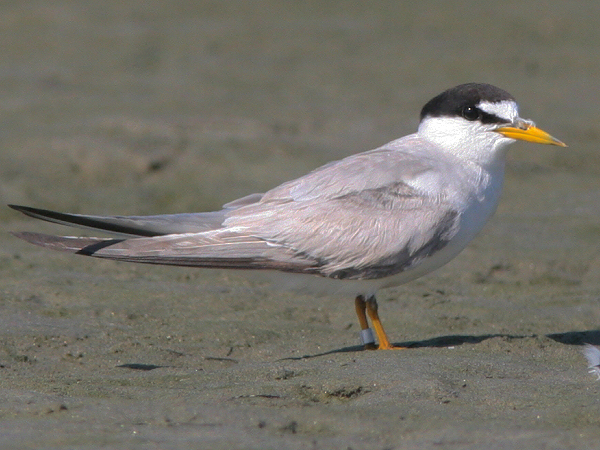
Location: San Diego River Flood Control Channel, San Diego, CA
Date: 2006-08-05
Lens: Canon 300mm IS F4 + 1.4x II Converter

 Least Tern
Sterna antillarum
Least Tern
Sterna antillarum
 Description
DescriptionThe Least Tern is an endagered species. The California subspecies (The California Least Tern) was the first on the endagered list 1970. Destruction and disturbance of beaches, where it nests, has caused its decline. As its name implies, the Least Tern is the smallest of all the North American terns. These birds are often seen hovering and then diving into the water for small fish and other marine or freshwater organisms.
General: Sexes similar. 8.5 to 9 inches in length.
Adult Alternate: White face, foreneck, breast and belly. Black cap with white forehead patch. Pale gray rump, tail and back. Forked tail. Gray wings with darker outer two primaries. Thin, pointy yellow bill with black tip. Short yellow legs.
Adult Basic: White face, forehead, foreneck, breast and belly. Black and white mottled cap. Gray back and wings with darker outer two primaries. Black bill. Short orange legs.
First Winter/Summer: White face, forehead, foreneck, breast and belly. Gray back and wings. Partial black hood. Pale crown with dark streaks. Pale forehead. Dark eye bar. Black bill and legs.
Juvenile: White foreneck, breast and belly. Dark eyepatch. Dark bill. Pale brown/buff forehead, hood and back. Gray wings with brownish feather tips. Pale crown with brown/buff and black streaks. Short dark tail. Short, pale orange legs.
Coastal waters and beaches.
 Nesting
Nesting2-3 buff eggs with light spotting. The eggs have a 20-22 day incubation period. Fledging occurs 19-20+ days after hatching. The eggs are laid in an unlined scrape of sand. Nests in colonies.